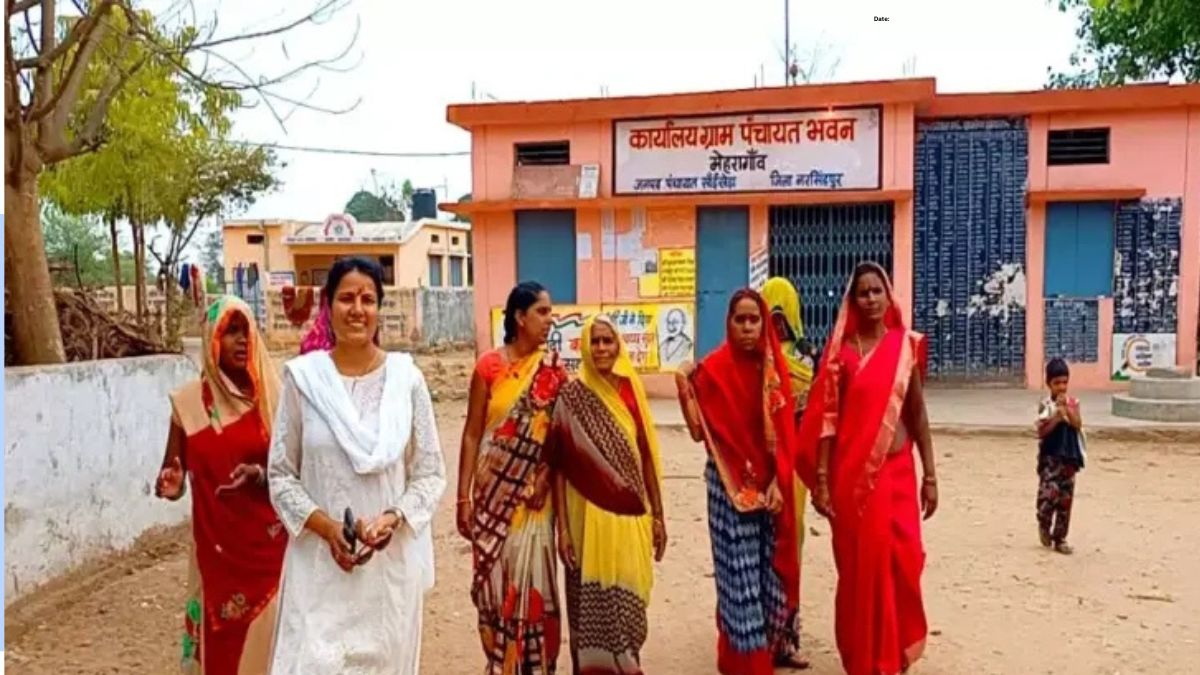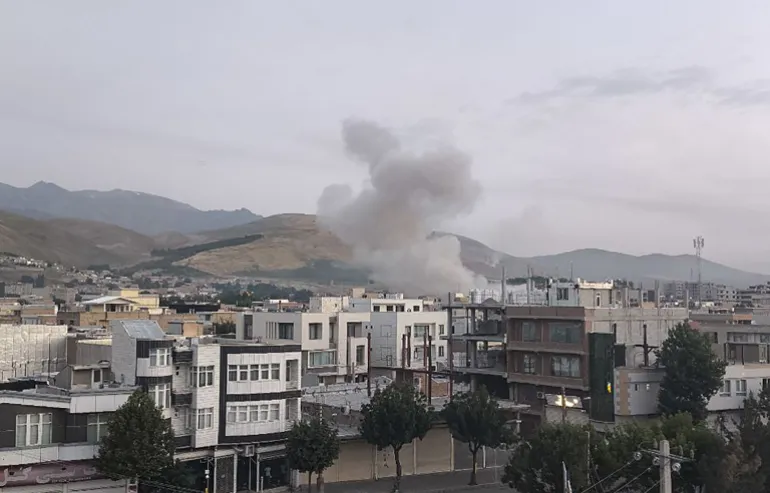- Courses
- GS Full Course 1 Year
- GS Full Course 2 Year
- GS Full Course 3 Year
- GS Full Course Till Selection
- Answer Alpha: Mains 2025 Mentorship
- MEP (Mains Enrichment Programme) Data, Facts
- Essay Target – 150+ Marks
- Online Program
- GS Recorded Course
- Polity
- Geography
- Economy
- Ancient, Medieval and Art & Culture AMAC
- Modern India, Post Independence & World History
- Environment
- Governance
- Science & Technology
- International Relations and Internal Security
- Disaster Management
- Ethics
- Current Affairs
- Indian Society and Social Issue
- NCERT- Science and Technology
- NCERT - Geography
- NCERT - Ancient History
- NCERT- World History
- CSAT
- 5 LAYERED ARJUNA Mentorship
- Public Administration Optional
- ABOUT US
- OUR TOPPERS
- TEST SERIES
- FREE STUDY MATERIAL
- VIDEOS
- CONTACT US
Panchayat Advancement Index
Panchayat Advancement Index
14-04-2025

Introduction
- On April 9, 2025, the Ministry of Panchayati Raj released the Panchayat Advancement Index (PAI) Baseline Report for FY 2022–23 — India’s first unified measure of grassroots development performance.
- The report is based on validated data from 2,16,285 Gram Panchayats, out of a total 2,55,699, across 29 States/UTs, marking a major push toward data-led local governance.
- With only 699 Panchayats qualifying as Front Runners and over 1.32 lakh classified as Aspirants, the report reveals substantial performance disparities across rural India, highlighting the urgent need for targeted governance and planning reforms.
About Panchayat Advancement Index (PAI)
- The Panchayat Advancement Index (PAI) is a composite, multi-sectoral tool launched by the Ministry of Panchayati Raj (MoPR) to assess the progress of Gram Panchayats in implementing Localized Sustainable Development Goals (LSDGs).
- It evaluates development outcomes across nine themes:
(i) Poverty-Free & Enhanced Livelihoods,
(ii) Healthy Panchayat,
(iii) Child-Friendly Panchayat,
(iv) Water-Sufficient Panchayat,
(v) Clean and Green Panchayat,
(vi) Self-Sufficient Infrastructure,
(vii) Social Justice and Security,
(viii) Good Governance, and
(ix) Women-Friendly Panchayat. - The nine LSDG themes are derived from the broader SDG 2030 framework, ensuring alignment between national goals and global benchmarks
- The index uses 435 unique indicators (331 mandatory, 104 optional), translating into 566 data points, aligned with the National Indicator Framework (NIF) of the Ministry of Statistics and Programme Implementation (MoSPI).
- Data is collected through a dedicated multilingual portal (pai.gov.in) and validated at multiple levels — Gram Panchayat, Block, District, and State — ensuring accuracy and accountability.
- Each Panchayat is classified into one of five categories: Achiever (90+), Front Runner (75–89.99), Performer (60–74.99), Aspirant (40–59.99), and Beginner (below 40) based on composite and thematic scores.
- The PAI framework supports evidence-based planning, enables Panchayat Development Plans (PDPs), and guides state-level policymaking with theme-specific insights.
- It is also used by MoPR and States for performance-linked incentives, and though there is no inter-state ranking, intra-state benchmarking is encouraged to replicate best practices.
Performance Trends and State-Level Insights
- The PAI Baseline Report for FY 2022–23 assessed 2,55,699 Gram Panchayats, of which 2,16,285 submitted validated data through the official portal.
- Based on composite and thematic scores, Panchayats were classified into five performance categories:
• Achiever (90+) – 0 Panchayats
• Front Runner (75–89.99) – 699 Panchayats (0.3%)
• Performer (60–74.99) – 77,298 (35.8%)
• Aspirant (40–59.99) – 1,32,392 (61.2%)
• Beginner (Below 40) – 5,896 (2.7%) - This classification system helps identify development gaps and enables theme-specific interventions under the LSDGs.
- Gujarat leads in performance with 346 Front Runners and 13,781 Performers, followed by Telangana (270 Front Runners, 10,099 Performers).
- Other key states include Maharashtra (12,242 Performers, 27 Front Runners), Madhya Pradesh (7,912 Performers), and Uttar Pradesh (6,593 Performers).
- In contrast, Bihar, Chhattisgarh, and Andhra Pradesh recorded high concentrations of Aspirant Panchayats, indicating urgent development needs.
- 11,712 Panchayats from Meghalaya, Nagaland, Goa, Puducherry, and West Bengal were excluded due to pending validation, limiting full regional comparability.
- Each data entry underwent multi-tier validation — from the Gram Panchayat to the State level — ensuring consistency and accuracy before final classification.
- Despite robust institutional records, no Panchayat qualified as an Achiever, underscoring the PAI’s role as a aspirational index rather than a status measure.
- Smaller Union Territories like Andaman & Nicobar Islands also reported participation, particularly in the Aspirant and Performer tiers, reflecting wide adoption.
- Interestingly, some large and otherwise well-performing states such as Tamil Nadu and Karnataka did not feature prominently among top-ranking Panchayats, indicating deeper structural challenges.
- These trends reveal deep inter-state disparities, highlight governance and capacity gaps, and offer scope for healthy competition and intra-state benchmarking.
Challenges Faced by Panchayats with Lower Scores
- In low-scoring states like Bihar, a single Panchayat Secretary often manages multiple villages, reflecting severe human resource shortages at the grassroots.
- Thousands of Gram Panchayats across states like Punjab and Rajasthan still lack basic computing infrastructure, impeding digital integration.
- Some states, such as Tamil Nadu, have been reported to outsource data-entry tasks, which may compromise data integrity in platforms like PRIA Soft.
- In Tripura, just 42 out of 1,176 Panchayats achieved a high grade in the PAI — a clear sign of thematic imbalance, with strengths in health offset by gaps in governance or infrastructure.
- Panchayats continue to earn a very small share of revenue through local taxation, often estimated around 1%, limiting fiscal autonomy.
- Even decades after the 73rd Amendment, several states (e.g. Bihar) have not fully operationalized devolved functions, leaving Panchayats without control over essential services.
- In several politically sensitive states, electoral decisions are sometimes influenced more by party dynamics than local development needs.
How the PAI Supports Local Governance and SDG Planning
- The PAI enables decentralized, data-driven planning by helping Panchayats identify local gaps using 435 indicators across nine LSDG themes.
- Out of 2.55 lakh Gram Panchayats, 2.16 lakh submitted validated data in FY 2022–23, forming the basis for targeted Panchayat Development Plans (PDPs).
- For example, under the “Healthy Panchayat” theme, indicators like immunization coverage and health facility access guide Panchayats in designing local health strategies.
- The index highlights theme-specific gaps, such as poor governance or economic underperformance in Aspirant-heavy states like Bihar and Chhattisgarh.
- Policymakers — including state governments and MPs — use PAI data to monitor ground realities, realign schemes, and better allocate development resources.
- The categorization into Front Runners, Performers, Aspirants, and Beginners fosters healthy competition; for example, Gujarat’s 346 Front Runners set a benchmark for others.
- The PAI is used for performance-linked incentivization by the Ministry of Panchayati Raj, and states are encouraged to adopt similar models.
- Although inter-state comparisons are avoided, intra-state benchmarking allows states like Maharashtra and Madhya Pradesh to compare GPs and replicate best practices.
- Through its multilingual digital portal, the PAI ensures real-time tracking and transparent data validation, strengthening accountability in rural governance.
- Ultimately, the PAI bridges local priorities with the global SDG 2030 agenda, transforming Panchayats into strategic units of inclusive, sustainable development.
Conclusion
- The Panchayat Advancement Index (PAI) marks a transformative shift in India’s approach to grassroots governance by enabling measurable, theme-based rural planning.
- As India advances toward the SDG 2030 agenda, the PAI provides a blueprint for data-led, inclusive, and accountable development at the Panchayat level.
- Its future lies in continuous refinement, greater capacity-building, and nationwide adoption — turning every Panchayat into a driver of localized progress.
|
Also Read |
|
| FREE NIOS Books | |




